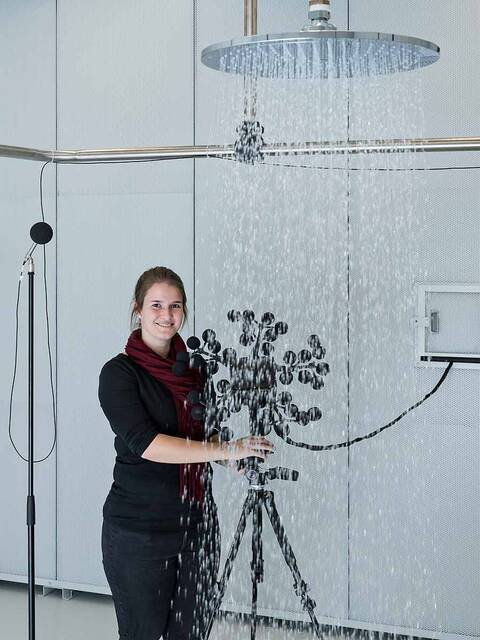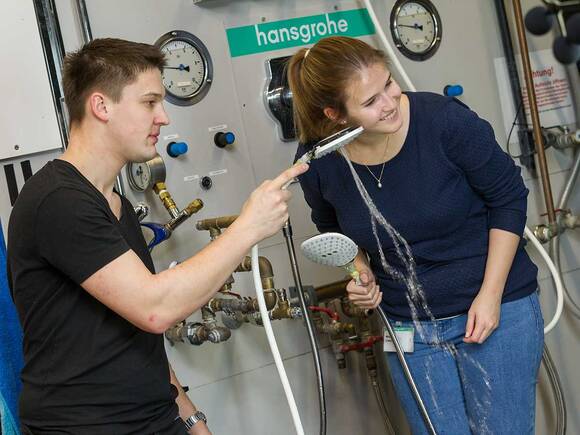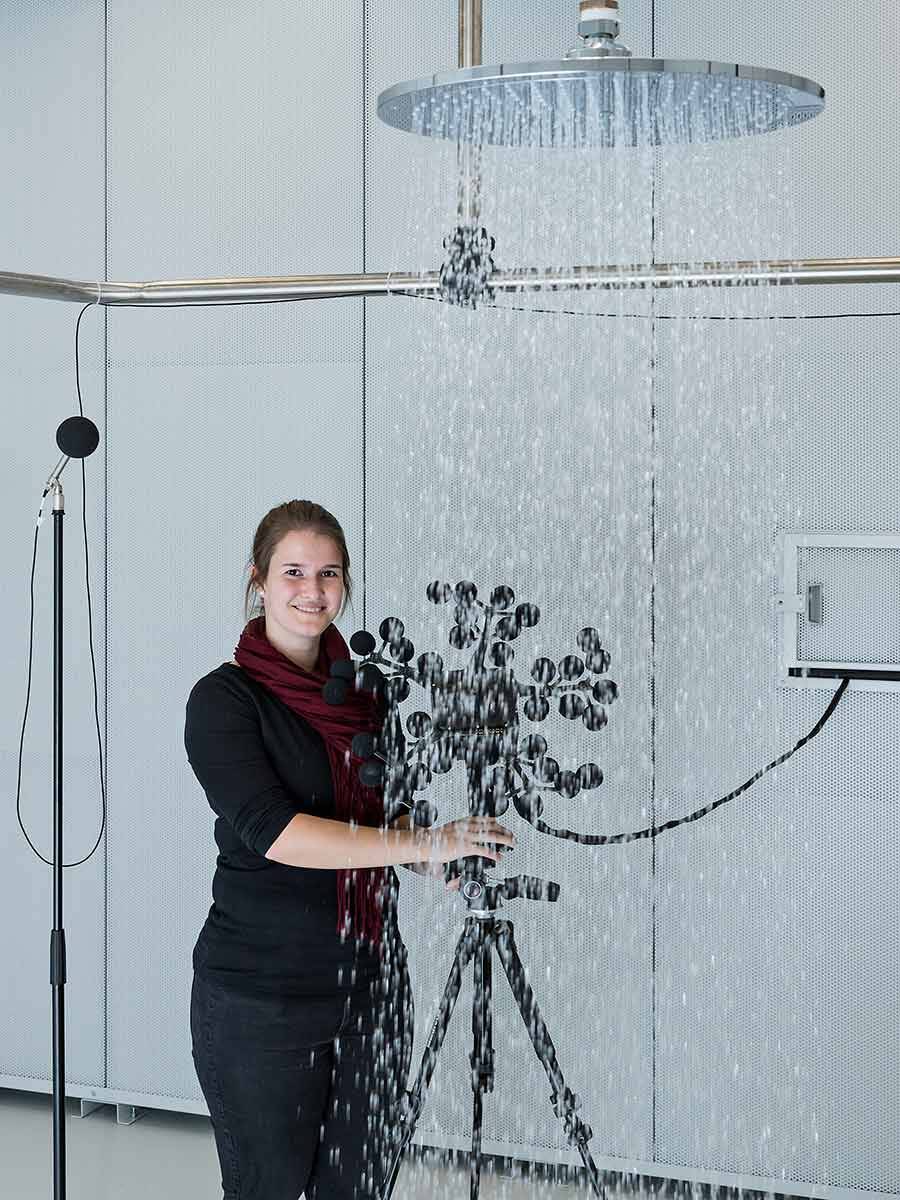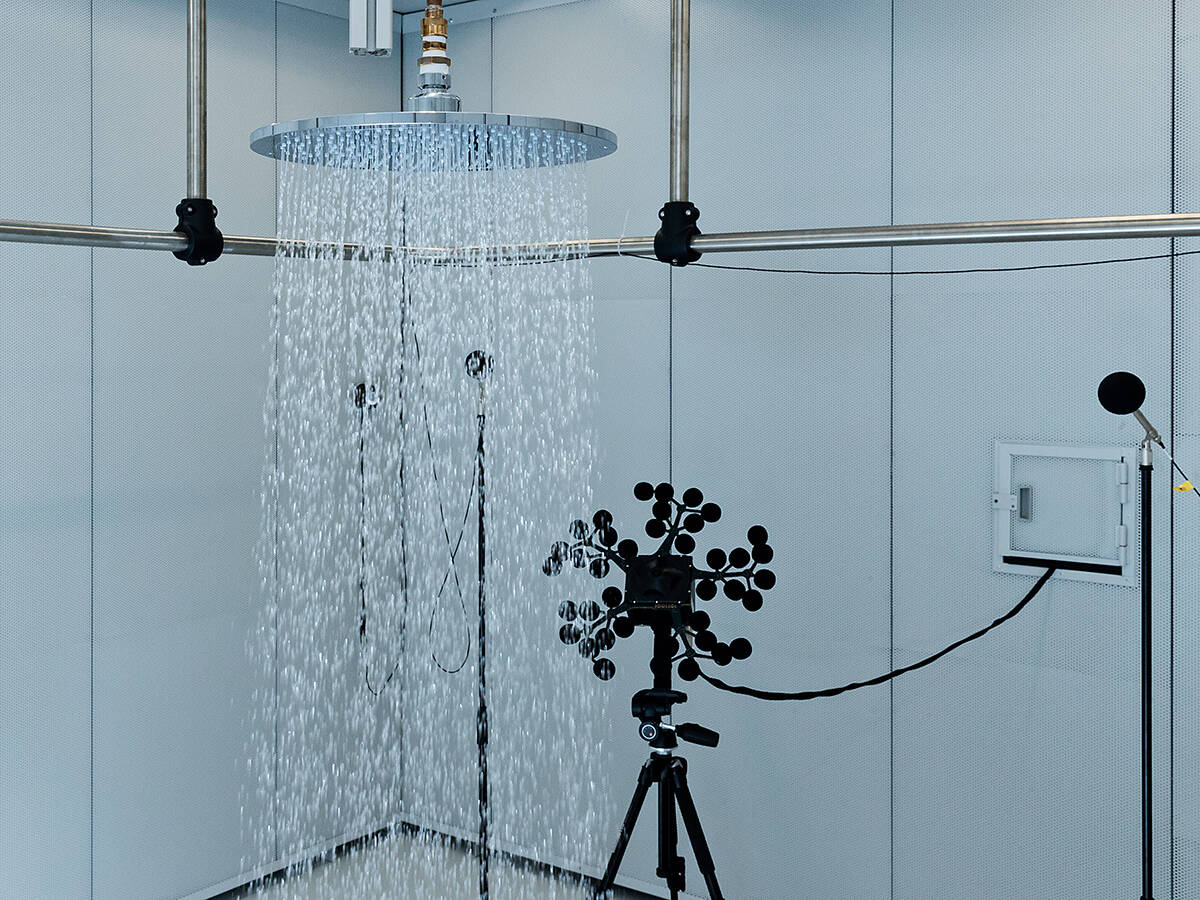The perfect water sound
How Hansgrohe spray researchers are working on refining the acoustic enjoyment of water
For her job, Melanie Grüner needs a good ear. The acoustics expert listens very carefully in the airborne sound test facility at the Hansgrohe research laboratory in the Black Forest. Her aim is to find the perfect water sound. Key quality characteristics of the hansgrohe brand's premium products not only include design and durability, but also pleasant sounds.
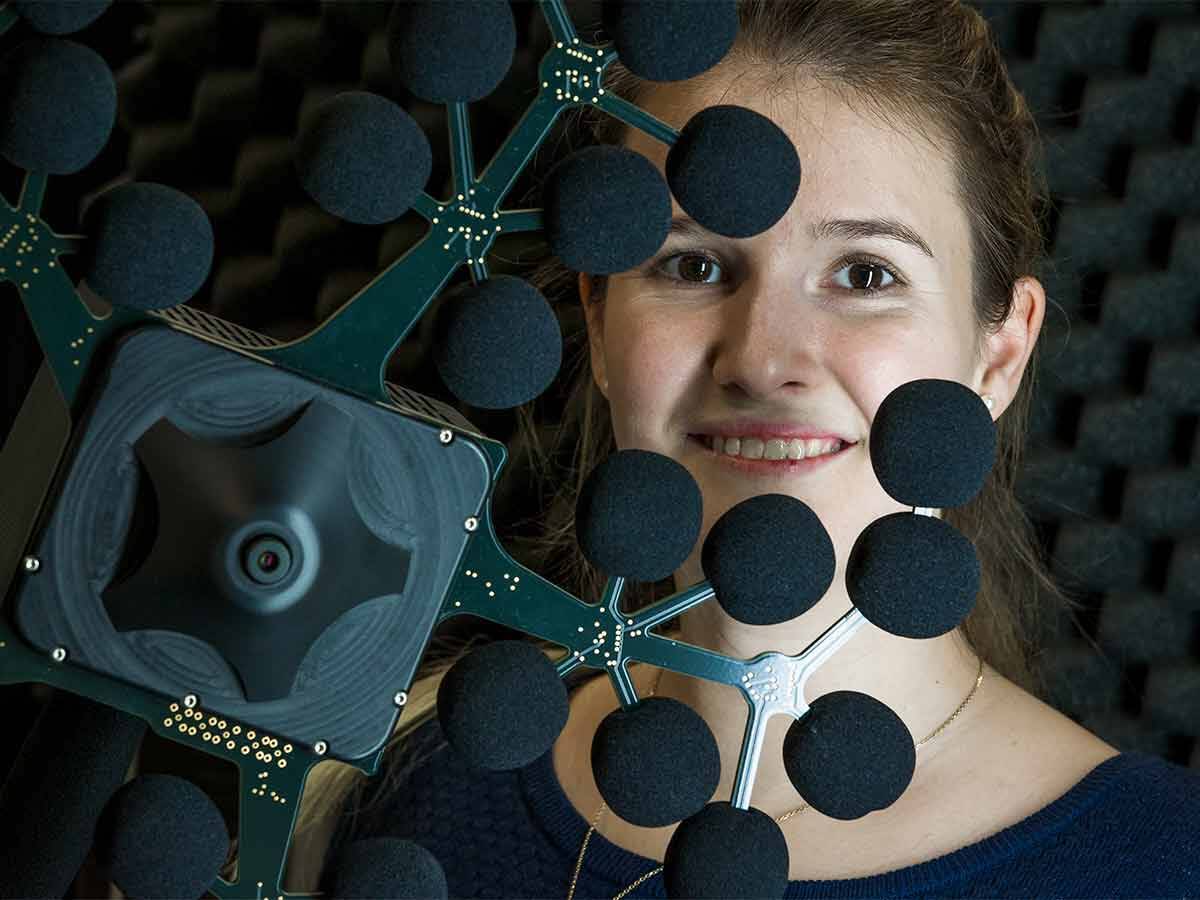
“Noise behaviour is one of the intrinsic values of a tap or shower, and is an expression of product quality.”Melanie Grüner
Swooshing and trickling
How should water sound in the bathroom?
In the automotive industry, acoustics experts have long been key members of development teams. They help create the perfect engine sound or the reassuring thud of the car door closing. Hansgrohe has a good listener too: Melanie Grüner. “I help ensure that our products enable customers to really enjoy using water with all their senses, including via acoustics”, said the process engineering graduate. For a perfect water sound, water jets should not be too loud or accompanied by unpleasant ambient noise.
“The goal is to approve all products in Group I.”
Recently, structure-borne sound test facilities equipped with acoustic cameras have been introduced to help with noise testing. Similar to a recording studio, microphones determine the sound pressure levels. “We carry out standardised tests in order to obtain approvals for our products”, explained Grüner. We particularly focus on bathroom noises that can be heard in adjoining rooms. The product is certified depending on the volume: acoustic group I, II or U (unclassified). In Group I, a shower is as quiet as a slight rustling of leaves in a deciduous forest. “The new tests help Hansgrohe attain the best acoustic group.”
Showering, washing and bathing without any noise interference
“With our system, we can analyse, compare and classify the products with reproducible results.” Hidden sound sources within the products are detected and the products are optimised. In acoustic group I, a tap may generate a maximum 20 decibels at a pressure of three bar. This makes it ideal for apartment or hotel buildings as well as offices, surgeries, hospitals or schools. Group I attests to a product’s high quality and also ensures uninterrupted enjoyment of the acoustics of water.

